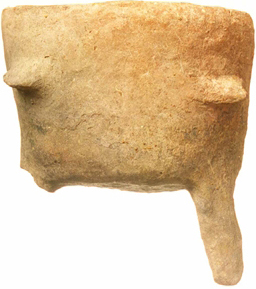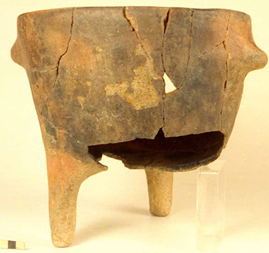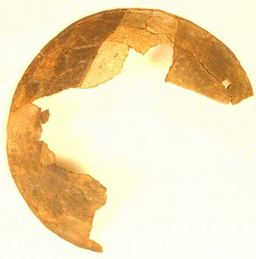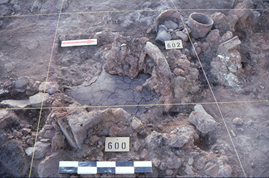Neolithic : Food and Culinary practices
Food Preparation
 |
Food was consumed either raw, with or without preliminary preparation (crushing, kneading, mixing with other ingredients, or fermenting), or cooked. In that case, food could be placed directly in the oven, on the preheated smooth cooking-surface (breads or pancakes for example), or over the coals, either on a spit (grilled meat) or in a ceramic container (boiled or simmered dishes). Cooking-vessels were already quite diverse by the Late Neolithic period and many clues suggest that potters were choosing the materials and shapes best for this purpose. In Late Neolithic I two particular types of vessels are in use: tripod (i.e. three-legged) cooking-pots, which are open vessels with two or four lugs or handles, whose capacity ranges between 4 and 8 litres; and “cooking-plates”, which are big shallow plates with a diameter of 50-60 cm, probably used for dry cooking. Several examples of these vessels have been found in the houses of this period, sometimes having broken during use. But vessels of more ordinary shapes were also used, such as a biconical pot filled with barley (Hordeum vulgare), found on a hearth behind the oven of a house next to a tripod cooking-pot. The disappearance of tripod cooking-pots and plates during the next phase (Late Neolithic II) clearly marks a change in culinary practices, which for the moment is not observable in the rest of the material evidence (architecture, botanical or animal remains). |
 |
 |
 |

